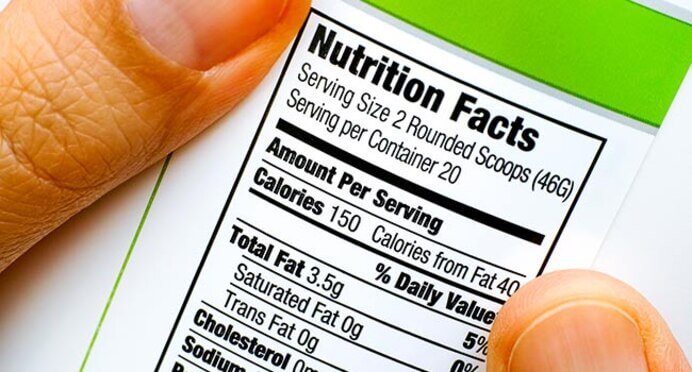Focus On The Minimum Calories Per Day To Survive
Let’s be clear here. The minimum calories per day to survive is very different from the number of calories you currently eat on a normal day-to-day basis. Having enough food to stay alive doesn’t mean that you’re always getting the nutrients your body needs to grow strong and stay healthy. It’s actually more about staying alive until you can better your situation and find more enjoyable foods.
When starting your food storage it’s important to base your initial purchases on what you need to stay alive. The minimum amount of food you need to not die. After you have a decent amount of that type of food, then you jump to foods that are nutrient-packed. Then you can move on to foods that are more enjoyable to eat.
A lot of people get overwhelmed when they’re starting their food storage journey because they imagine having to buy one year’s worth of food to help carry on their current lifestyle. In most cases, that’s impossible. If people would focus their efforts on survival first, more people would have food storage.
My Recommended Food Survival List In Order Of Priority
- Survival food first (Rice, beans, and wheat)
- Nutrient packed food second (Fruits and vegetables)
- More enjoyable food third (pre-packaged meals and sweets)
How Many Calories Do You Need To Survive?
It can be challenging to give a blanket statement to answer the exact amount of calories your body needs to survive because it differs from body to body. It depends on each person’s metabolism, weight, age, sex, and activity level.
The UCLA Center for Human Nutrition says that eating less than 1,000 calories per day has the same effects on the body as total starvation, so this survival information should be used only for that: survival.
Most of us consume between 2,000-3,000 calories per day right now. However, in emergency situations, most humans will be able to survive for short periods of time with a minimum of 500-800 calories per day.
What Are The Best Calorie And Nutrient-Packed Foods?
In a real emergency situation, you will definitely want to consume whatever food is available. However, you will want to store foods that offer the most amount of calories and nutrients.
Leafy greens are high in nutrients, but probably aren’t going to sustain you long-term because of the low calories they offer. At the same time, just eating higher-calorie foods such as chips and candy, also won’t give you the energy you need to thrive for longer periods of time. They can give you energy boosts, but the ultimate goal is to store foods that give nutrients along with higher calories.
The following foods are calorie-dense, nutritious options for when you’re trying to stretch your energy as far as you can:
- Protein smoothies
- Milk
- Rice
- Red meat
- Nuts
- Nut butter
- Potatoes/Sweet potatoes
- Beans
- Protein supplements and bars
- Salmon
- Avocado
- Whole grain bread
- Chicken leg
- Tofu
- Dark chocolate
- Oats
- Cheese
- Whole eggs (yolk plus whites)
- Yogurt (full fat)
Do The Calories Required Differ From Male To Female?
Generally, males require more calories than females. Females are recommended to eat 1,600-2,400 calories per day, while males are recommended to eat 2,000-3,000 calories. This is very general and can look different from person to person.
In an emergency situation, males will probably require 100-200 calories more than their female counterparts to align with the numbers given above.
Does It Matter What Variation Of Foods You Eat To Keep Your Calories Up?
As mentioned earlier, your body will best respond to calorically dense, nutrient-packed food. However, this won’t always be an option.
Your body will respond very differently to 500 calories of meat compared to 500 calories of candy or even to 500 calories of cheese. The macronutrients that make up all of the food that we eat, change our energy levels and body composition.
However, if you are literally trying to survive, a calorie is a calorie, and you will want to eat whatever you can. Again, I recommend you follow the 3 steps outlined above when starting down your food storage journey. Survival, nutrition, and then enjoyment.



